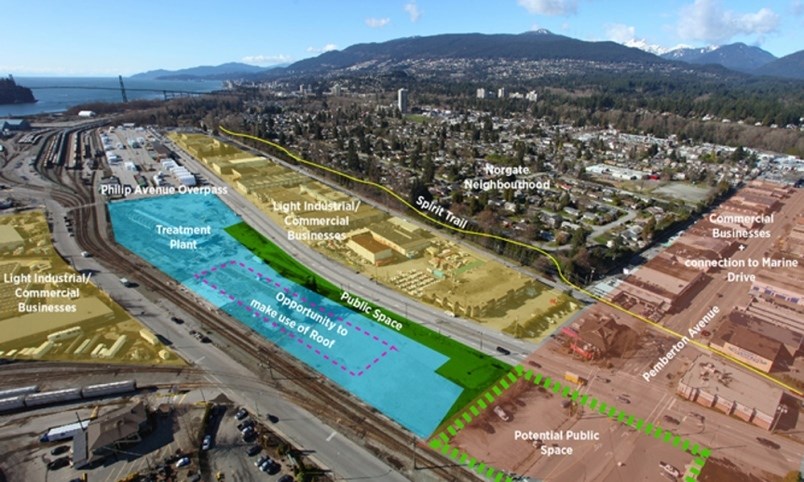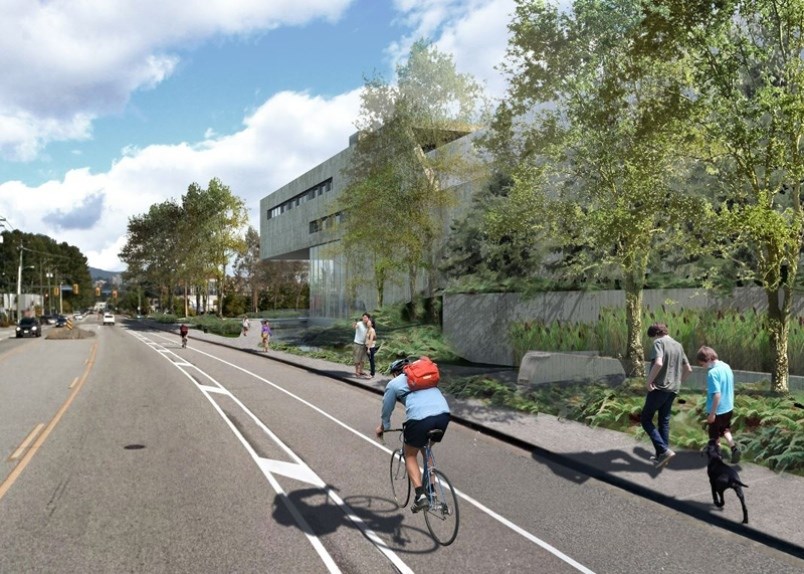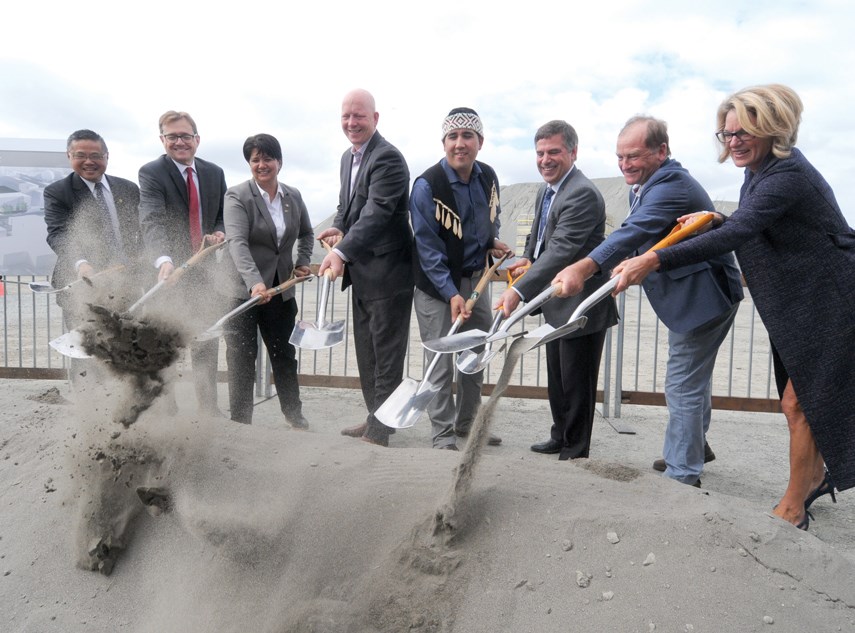Politicians dug in their shovels to celebrate the official start of construction on the new $700-million sewage treatment plant for the North Shore Friday, vowing that when the plant is finished at the end of 2020, it will pass the smell test both literally and otherwise.
Construction is expected to start this fall on the project, which will replace the aging Lions Gate sewage treatment plant a few kilometres to the west, under the Lions Gate Bridge. That plant is the oldest wastewater treatment facility in the Lower Mainland, said City of North Vancouver Mayor Darrell Mussatto, who is also the chair of Metro Vancouver’s utilities committee.
The old plant began providing primary sewage treatment in 1961, said Mussatto. “They used to say the solution for pollution is dilution,” he quipped, adding environmental standards have come a long way since then.
The new sewage plant project - being built with $212 million from the federal government, $192 million from the province, and the remainder paid by a combination of Metro Vancouver and North Shore taxpayers – is “a wise use of our tax dollars,” said Mussatto.
Funding for the plant is the largest amount that Metro Vancouver has ever received for an infrastructure project, said Greg Moore, chair of the Metro Vancouver board.
So far the project is “on time, on budget,” said Fred Nenninger, director of policy planning and analysis for liquid waste services with Metro Vancouver.
Nenninger said the new sewage plant is designed so that it won’t smell.
“We’ve set this plant up from the very early design to be an enclosed plant,” he said. Many sewage treatment plants have many open tanks in them which is where most of the unpleasant smell comes from. The new sewage plant will use enclosed tanks and there will be small spaces within the plant where smelly air is collected and scrubbed with odor control equipment, said Nenninger.

He added staff visited five plants in Washington State including ones in Seattle, Blaine and Olympia which use the same technology before committing to it, to “ensure this technology works.”
Bio-solids from the plant – known to most people by less scientific sounding names – will be disinfected and essentially turned into a soil that is then used to spread on mine reclamation sites and range lands.
Preparatory work at the site on West First Street, near the foot of Pemberton Avenue, has been going on for a number of months at the site.
That’s included installation of 3,600 stone columns in the ground, so that the plant will withstand earthquakes. It also includes barge loads of sand being brought in to compress the ground on the site in preparation for the first concrete that will be poured in the next couple of months.
“It’ll look quite different this time next year,” said Nenninger.
Politicians credited the Squamish Nation for helping the project to come together. Under deals negotiated with the nation’s council, a new sewage line bringing sewage from West Vancouver to the new plant and existing lines that will take treated liquid sewage back to the existing ocean outfall will continue to run under Squamish Nation land. If that agreement hadn’t been possible “it would have been very expensive and very difficult” to relocate the pipes, said Mussatto.
Under agreements with Metro Vancouver, the Squamish Nation and the federal government, once the new plant is built, the old plant will be decommissioned and the land will be remediated to residential standards and returned to the Squamish Nation’s Capilano reserve lands.

Land where the current sewage plant sits was among 130 acres expropriated from the reserve lands in 1916, said Squamish Nation Councillor Chris Lewis. Later, in the 1950s, Squamish Nation leaders struck deals with the regional government to allow water mains to be built under reserve land. As part of the process of negotiating the new agreements, “we had elders come in and tell us what was said back in those days and what was agreed to back in those days,” said Lewis.
He said the nation is “very happy and pleased that the land is being returned. It’s prime real estate. It’s prime land.”
The approximately $20-million cost to remediate the current sewage plant site is included in the $700-million project budget for the new plant.
According to Metro Vancouver, the new sewage plant will generate about 75 per cent fewer greenhouse gases than the existing plant. The heat recovery facility at the plant will capture thermal energy from treated sewage for the City of North Vancouver’s Lonsdale Energy Corp.
North Vancouver MP Jonathan Wilkinson, who is also the minister of fisheries and oceans, told those gathered to celebrate the beginning of the project that the environmental upgrades are important not just to humans but also to aquatic life in the region.



